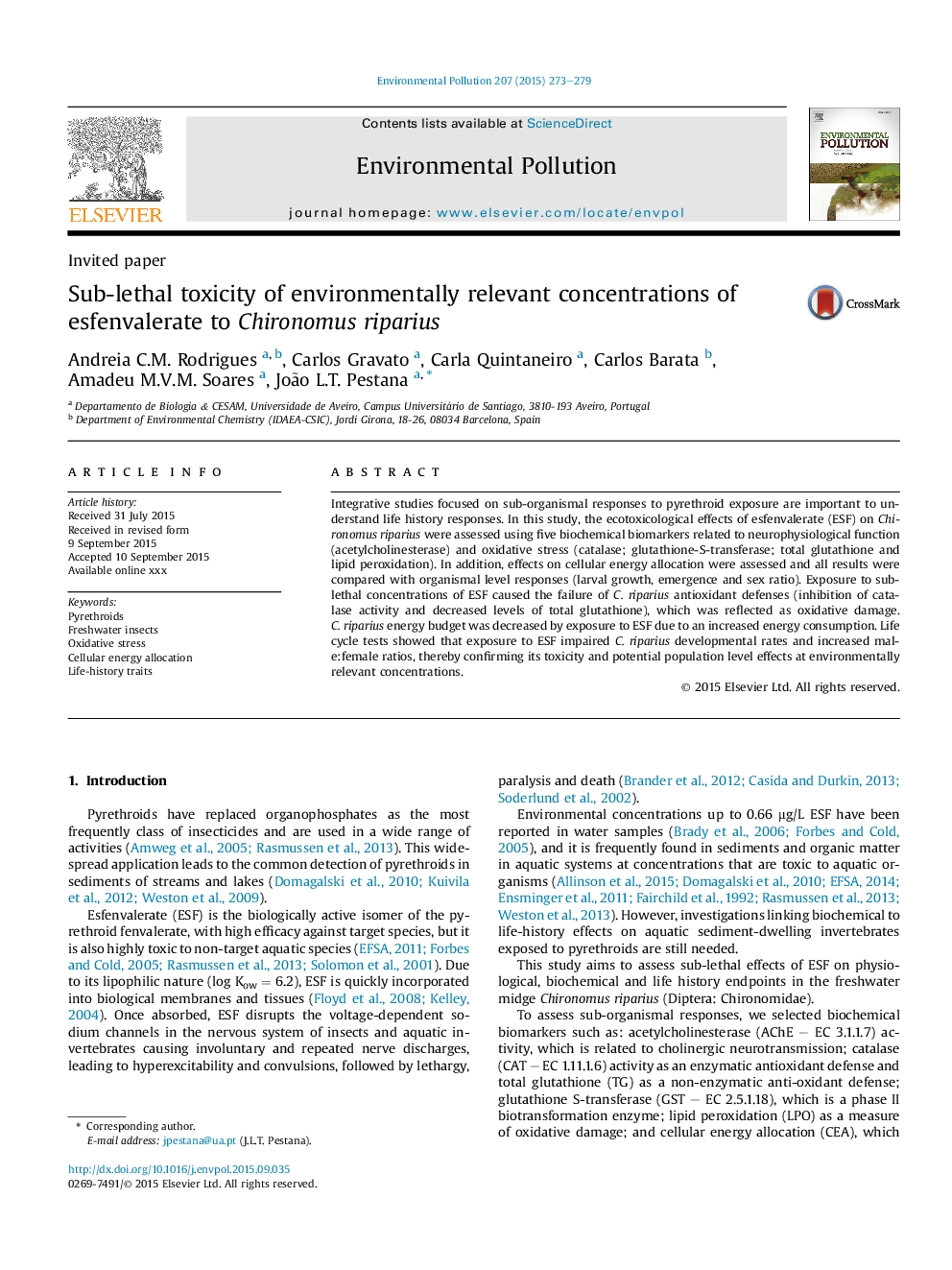| Article ID | Journal | Published Year | Pages | File Type |
|---|---|---|---|---|
| 6316184 | Environmental Pollution | 2015 | 7 Pages |
Abstract
Integrative studies focused on sub-organismal responses to pyrethroid exposure are important to understand life history responses. In this study, the ecotoxicological effects of esfenvalerate (ESF) on Chironomus riparius were assessed using five biochemical biomarkers related to neurophysiological function (acetylcholinesterase) and oxidative stress (catalase; glutathione-S-transferase; total glutathione and lipid peroxidation). In addition, effects on cellular energy allocation were assessed and all results were compared with organismal level responses (larval growth, emergence and sex ratio). Exposure to sub-lethal concentrations of ESF caused the failure of C. riparius antioxidant defenses (inhibition of catalase activity and decreased levels of total glutathione), which was reflected as oxidative damage. C. riparius energy budget was decreased by exposure to ESF due to an increased energy consumption. Life cycle tests showed that exposure to ESF impaired C. riparius developmental rates and increased male:female ratios, thereby confirming its toxicity and potential population level effects at environmentally relevant concentrations.
Related Topics
Life Sciences
Environmental Science
Environmental Chemistry
Authors
Andreia C.M. Rodrigues, Carlos Gravato, Carla Quintaneiro, Carlos Barata, Amadeu M.V.M. Soares, João L.T. Pestana,
